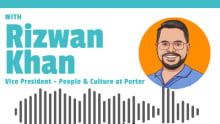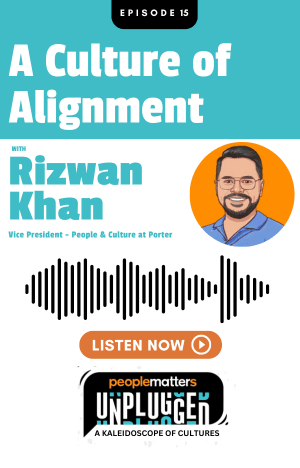Productivity for the new Remote and Dispersed Workforce

The most critical shift post the COVID pandemic is the mindset shift. We have moved from a mindset of “can we do this in person?” to “do we need to do this in person?”. This would mean the majority of the interactions with all stakeholders will move to a virtual mode. Workplace will be replaced by “My Space” that will be any space that allows 24/7 access and connectivity. While we already have many co-working models today, what I foresee happening is “Uberization of Workplace”, where employees will have to just use an App to locate the nearest workplace as per their convenience to just walk in, plug and play. As ‘remote everything’ is going to be the new mantra, the technology tools are enabling us to empower people and organisations to achieve more by enabling teams to collaborate from anywhere, delivering intelligent security and protecting privacy. We all know that the pandemic has accelerated the future of a re-imagined workplace. It has brought an unexpected shift to the traditional workplace. We all realised that ‘Work is not somewhere you go, but something you do’. In the new normal, companies are seeking to restore stability – but this calls for a transformation in workplace design. With considerations relating to health, safety and operational flexibility entering the picture, I think that a new paradigm is needed.
In today's knowledge driven networked organisation, where more and more employees will be remotely managing their deliverables, questions that all organisations are faced with are, “How do we know our people are fully productive? How do we ensure employees are not moonlighting?” The answer lies in re-calibrating our mindset on work, workforce, and workplace. In the "new normal" of hybrid work arrangement, all these 3 Ws get impacted by changing Technologies, Deliverables, and the Psychological Contract between the organisation and workforce.
Psychological Contract addresses what Chester Barnard identified as an individual employee’s “Zone of Indifference.” It is based on unwritten expectation between the individual and the organisation. The emerging themes in psychological contracts now are around work-life integration, flexible working arrangements, and portfolio careers. So, in the new world of business, when employees will work remotely, and physically away from rest of their colleagues, organisations need to re-create the employee experiences across all the employee lifecycle touchpoints, which are relevant in a virtual environment and provide the high moments of truth, and also, which are hyper-customised to the specific unique needs of the individuals.
The questions that we need to ask ourselves are, how does one configure an office of the future? What are the factors that are likely to affect design thinking? Covid’s first wave pushed organisations into the deep end of thinking about office spaces. organisations quickly, perhaps even pre-maturely committed themselves to a permanent remote-working model. Meanwhile, employees rekindled their long- forgotten hobbies and enjoyed family time in the new set-up. Now with more than 20 months into the pandemic, employee expectations are changing again. Zoom fatigue has taken over. Frontiers between the office and home have blurred, and many are missing the joys of coffee and watercooler conversations. The infatuation with WFH is fast wearing off, especially for the new age workforce, and hence, the future of the office is in question. But more broadly, offices will no longer be about mundane/routine work.
We must reconstruct how, where and by whom work is done. organisations should identify the most important processes for each major business, geography, and function, and re-envision them completely. organisations should also reflect on their values and culture and on the interactions, practices, and rituals that promote that culture. Additionally, offering flexible working arrangements by introducing staggered hours, flexitime, or flexiplace will help employees improve their work-life balance or integration whatever we may like to call it, while also allowing organisations to capitalise on the increased workforce productivity and efficiency. Workplace-redesign must account for both the changing world of work, and the cultural peculiarities of each region or geography. This is essential because, as social scientists and psychologists would argue, the workplace of the future must serve as fertile ground for motivating people. For India, some of the cultural aspects to keep in mind include a collectivist approach to decision-making; and the highly uneven distribution of power in the corporate ecosystem. Some of the other traits include a tendency towards ‘indirect communication’ and a higher-than-average capacity for working with ambiguity.
Going forward, with a large section of our workforce to work from home, there will be a huge rethink on Productivity and Performance. What exactly will be the definition of productivity? How are we going to measure it? How do we redefine the KRAs and rewards so that it is a fair and equitable reflection of their contribution to the organisation? The measurement of Productivity will change from activity to results and will have a lot of focus on corporate goals and teams rather than just individuals. We might need to explore the roll out of the OKR (Objectives and key results) framework, which will empower remote leaders and build boundaryless and fair performance tracking. Organisations must focus on business outcomes, teamwork, and collaboration.
This will be a fundamental shift in this hybrid ecosystem in my mind, and will bring in a culture of transparency with scoreboard being available and accessible to everyone. When Corporate goals are aligned with individual goals, with the scoreboard moving every week, employees can automatically see greater purpose to their work, leading to better engagement, ownership and hence productivity. In addition to setting clear objectives, accountability and autonomy for deliverables, the Managers and Leaders need to guide, inspire, and enable their teams, help them overcome bureaucratic challenges, help teams to leverage the best opportunities, arm them with the right expertise, and give them the tools they need to deliver fast. Once teams and individuals understand what results they are responsible to deliver, Leaders can focus on monitoring the outcome-based measurements, which can enable remote workforce to deliver higher quality of work.
But while we will transition into a hybrid work arrangement with remote working and work from home as the new ways of managing the work, workplace, and workforce, we need to be also conscious of a few fundamental aspects. Our human brains trigger release of certain happy hormones based on the stimulus of different senses like touch, feel, smell, see, hear, etc. In a remote working or virtual environment, we may be able to simulate the physical environment, but can’t replicate the physical workplace environment. This might have its impact on the sense of belongingness and associated engagement challenges. Hence, the Total Wellness Quotient of our workforce will become our priority that focuses on balancing mind, body, and soul.













